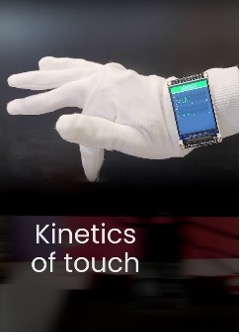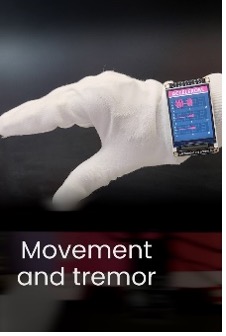The Sah Laboratory is working on the development of a smart wireless glove to monitor muscle function in patients with neurological movement disorders, primarily Parkinson’s disease.
Following last year’s proof-of-concept smartwatch, the team is now refining and validating this advanced glove in readiness for the Bio International Convention 2025 in Boston this month.
We sat down and asked Professor Sah about the potential for this exciting new technology.


Q: What is the key benefit for this new wearable device?
A: Essentially, this device addresses a key gap in current wearable technology, which typically only detects tremors. By providing richer, more detailed data, the smart glove has the potential to enhance both diagnosis and treatment for movement disorders.
Q: How does it work?
A: Our lightweight prototype integrates multiple sensors with software to track finger, wrist and hand kinetics during simple gestures, such as finger tapping and wrist bending, within a 10-second window.
Q: Why was there a transition from the smart watch to the smart glove in the pilot stage?
A: Current medical devices and smartwatches do not assess rigidity or slowness of movement, which forces neurologists and neurosurgeons to rely on long, subjective evaluations. We decided not to build a smartwatch essentially because of cost. A smartwatch would be around $1,000 compared to $100 for the glove, making it a more affordable and targeted solution.
Q: Is there any other product like this currently on the market?
A: No, there’s nothing quite like it. While smartphones and smartwatches can detect some aspects, they do not detect rigidity – and that’s the biggest challenge. Building a device that accurately measures rigidity is what sets this glove apart.
Q: Why is measuring rigidity so important in Parkinson’s disease?
A: Rigidity, along with tremor, is one of the major symptoms of Parkinson’s disease, aside from walking difficulties. Current treatment requires frequent specialist visits to measure rigidity and tremor. The smart glove aims to empower patients by enabling at-home monitoring and minor therapy adjustments as the disease progresses.
Q: How will you validate the device?
A: The team is currently collaborating with neurologist Professor Peter Silburn from Neurosciences Queensland to validate the device with deep brain stimulation (DBS) patients. Our aim is to measure data before the patients have electrodes implanted and then measure them after the procedure to observe the difference the treatment makes.
Q: What are your future plans for the smart glove?
A: Currently, the software is being developed for Windows, with future plans for a smartphone application to provide real-time results on patient devices. Additional research grants or investment is needed to bring this technology to market.



